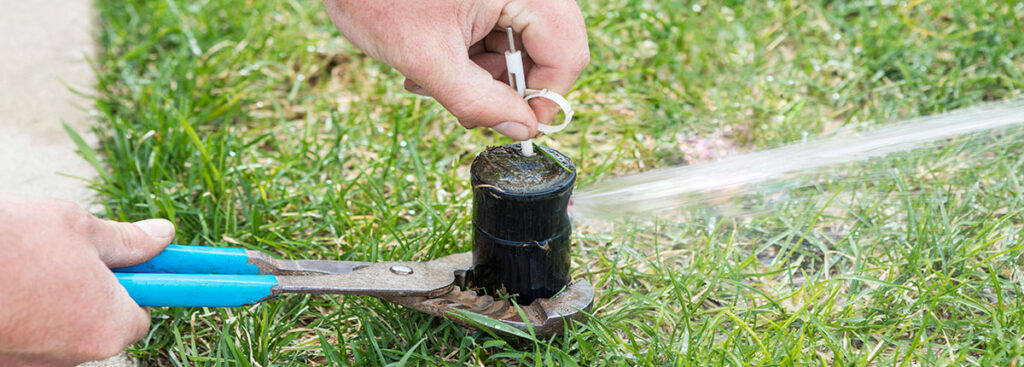Our Services
Landscape Maintenance
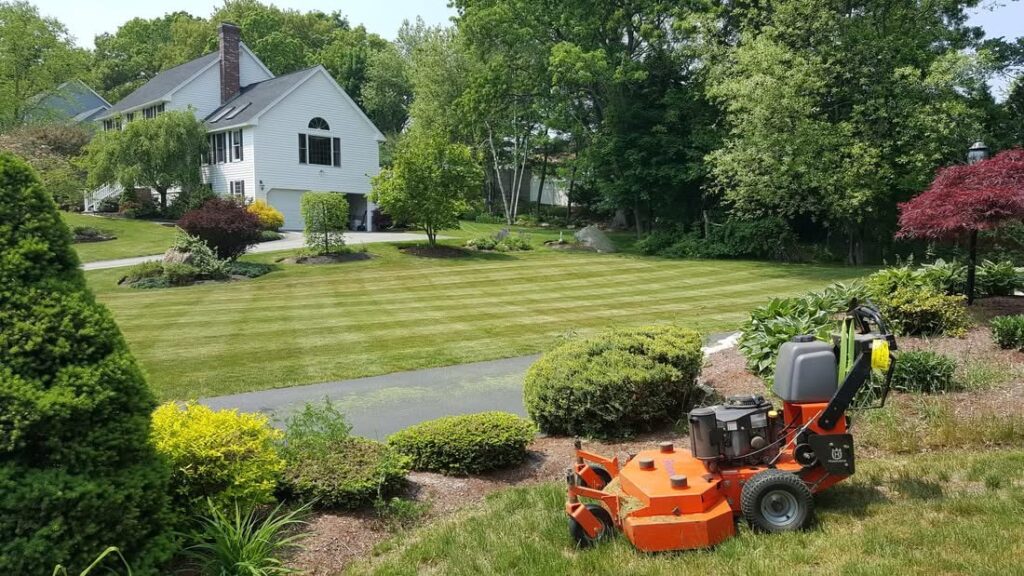
Weekly Mowing
• Mow and trim all turf areas at recommended heights
• String-trim all turf edges to keep planting beds contours sharp throughout the season
• Collect and remove grass clippings
• Blow all surfaces of Debris
Spring/Fall & Storm Clean-up
• Rake & clean all beds of leaves & debris
•Rake & clean all turf areas of leaves & debris so damage to turf grass will not occur
•Remove annuals flowers and prune perennials as needed
•Final mow & trim all turf areas to remove any fine debris left on surface of turf
•Clean all surfaces of debris
•Remove & dispose of all debris
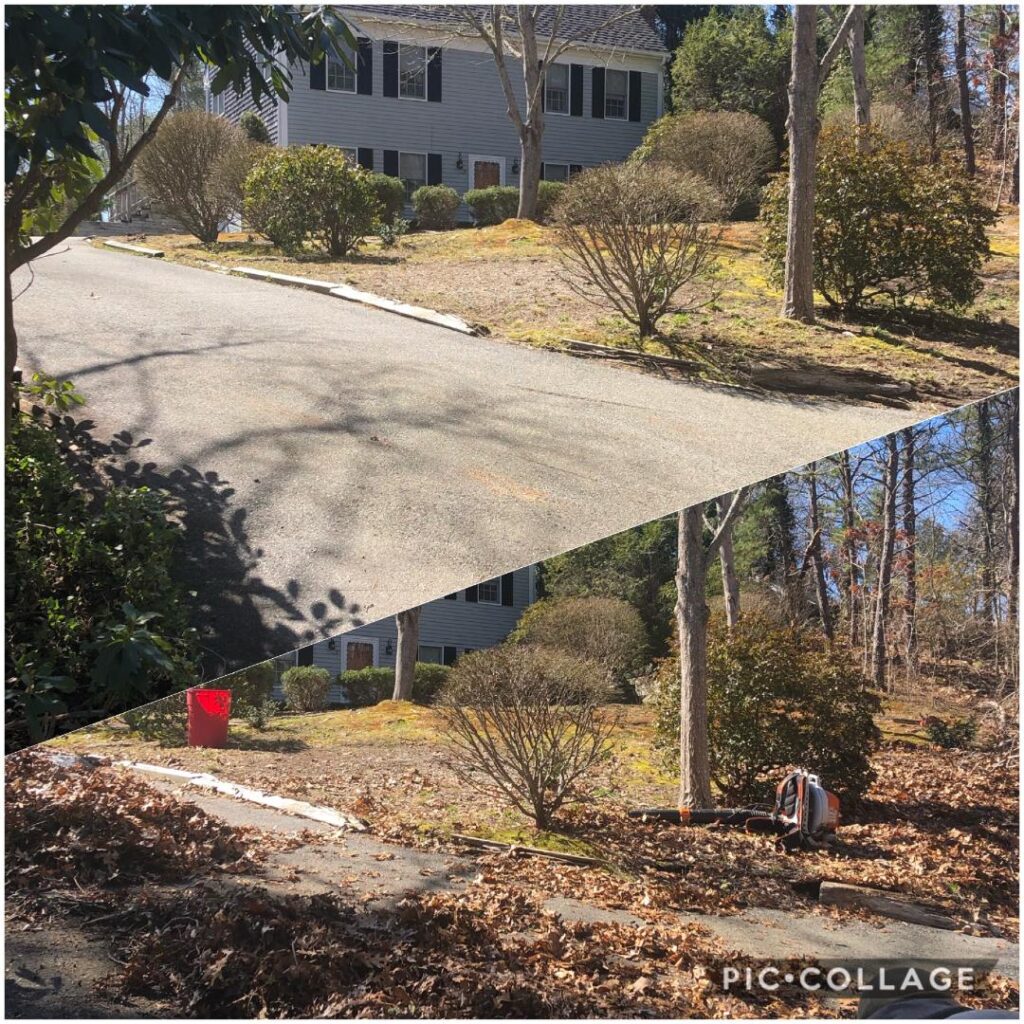
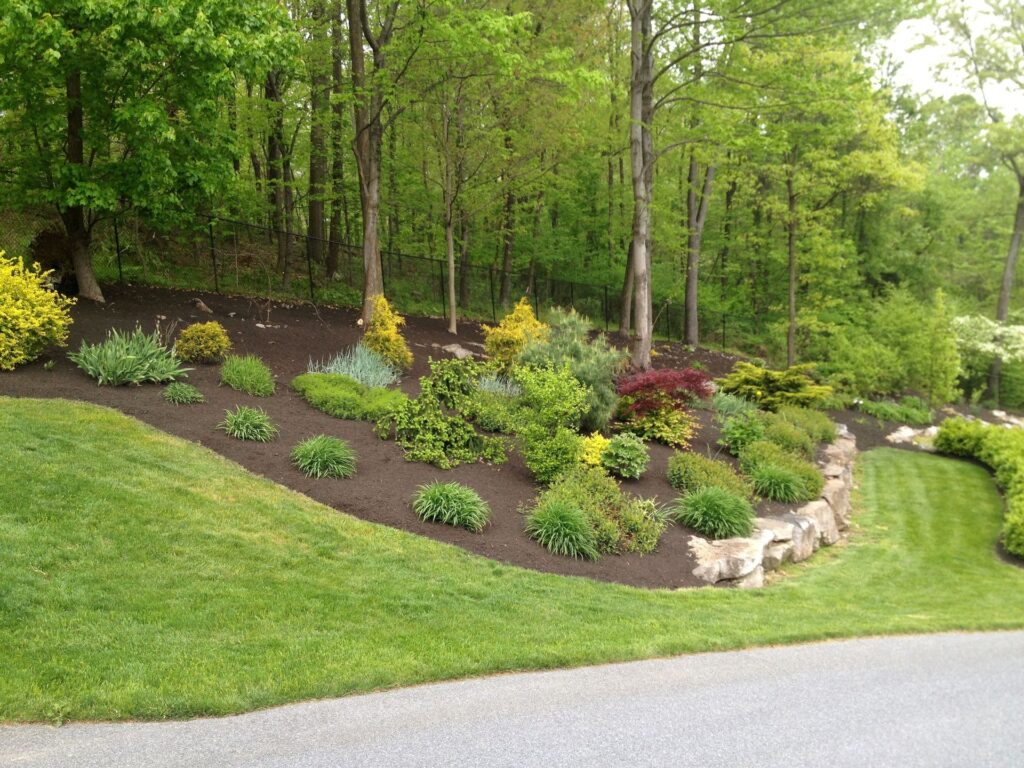
Edging Mulching
•Edge cut, rake clean along planting beds
•Clean and prepare areas for mulch installation
•Mulch spread evenly and neatly
•Clean all surfaces upon completion of mulch installation
•Remove and dispose of all debris
Shrub Pruning
Essentially, pruning is the removal of plant parts that are dead, ineffective, or have no use to the plant. Pruning allows the plant to put more energy into new flowers, fruits, or limbs that are healthy. Here a few reasons why pruning your trees and shrubs is important:
– Overall plant health
– Aesthetics
– Restrict growth when necessary
– Improve the quality of flowers and foliage
– Train the plant
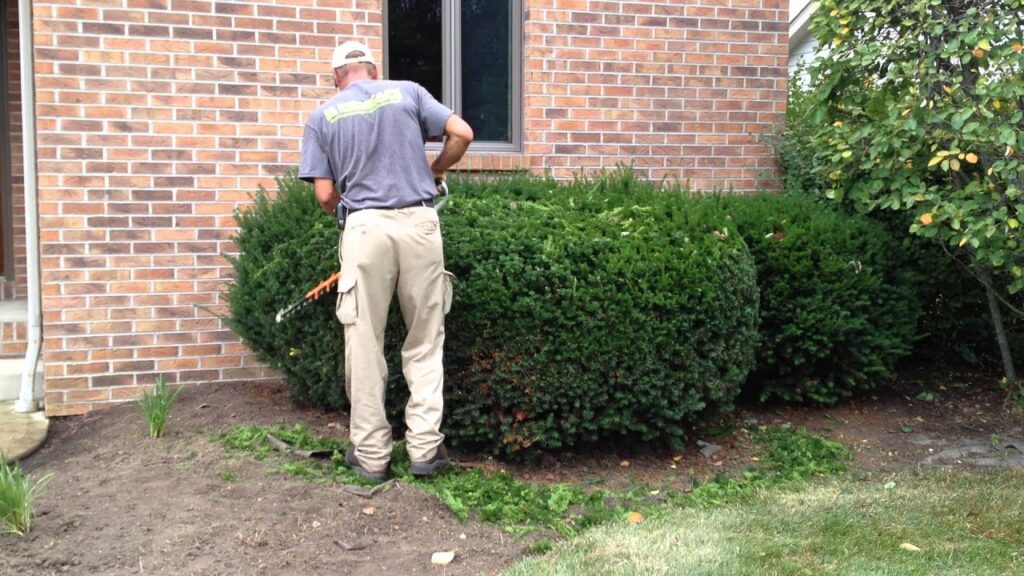
Lawn Care
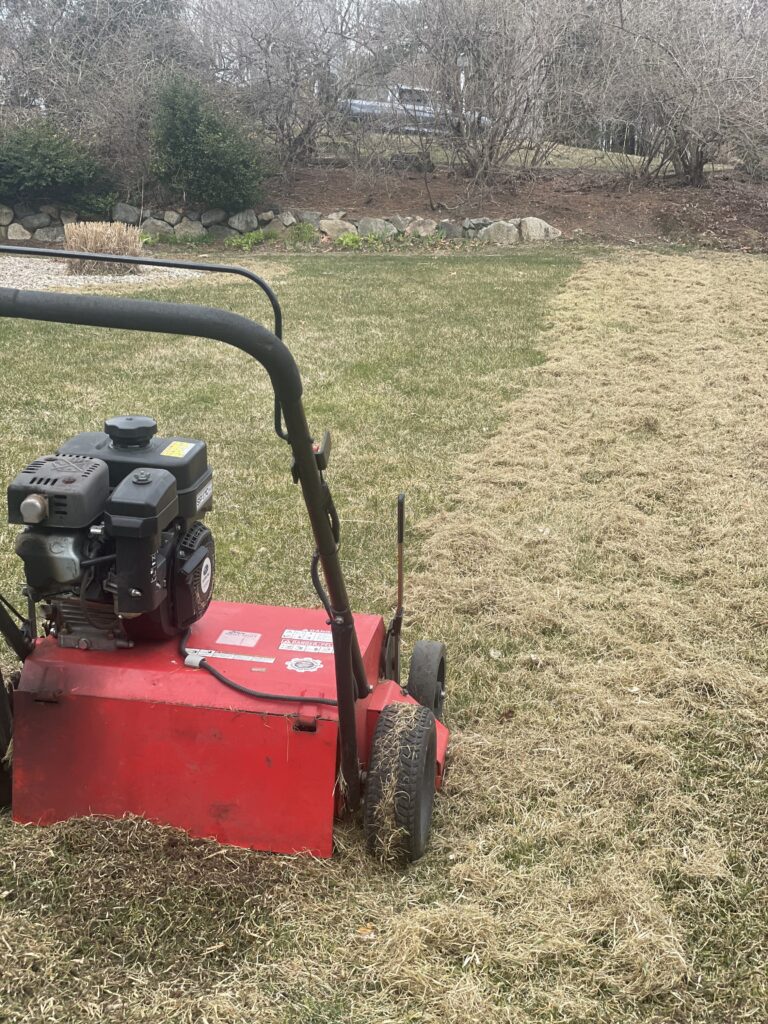
Dethatching
Thatch is the buildup of stems and grass clippings that accumulates at the bottom of a lawn. When thatch builds up it eventually blocks the flow of nutrients that are important to maintain a healthy lawn. However, it is important to understand that thatch is a biproduct of keeping a healthy lawn. It is recommended that you dethatch your lawn about once a year or when the level of thatch reaches ½”. Most lawns that need to be thatched have spongy consistency to them when you walk on them. The primary months to dethatch are in the beginning of fall or the months of April and May.
Aeration
Have you ever seen a large number of thumb size pellets lying around in someone’s lawn? The odds are good that those are there because of core aeration. Aerating your lawn once a year around the beginning of Fall & Spring is very important and here is why:
– Eliminates soil compaction
– Improves water infiltration & rooting
– Reduces thatch
– Helps your lawn cope with hot and dry spells
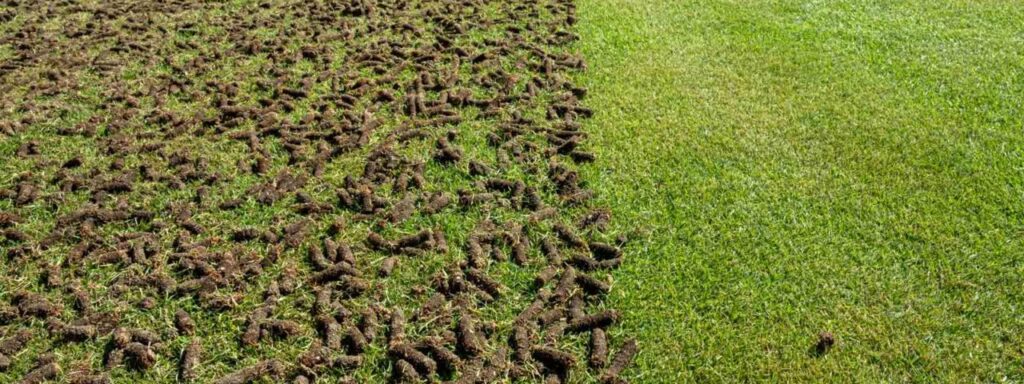
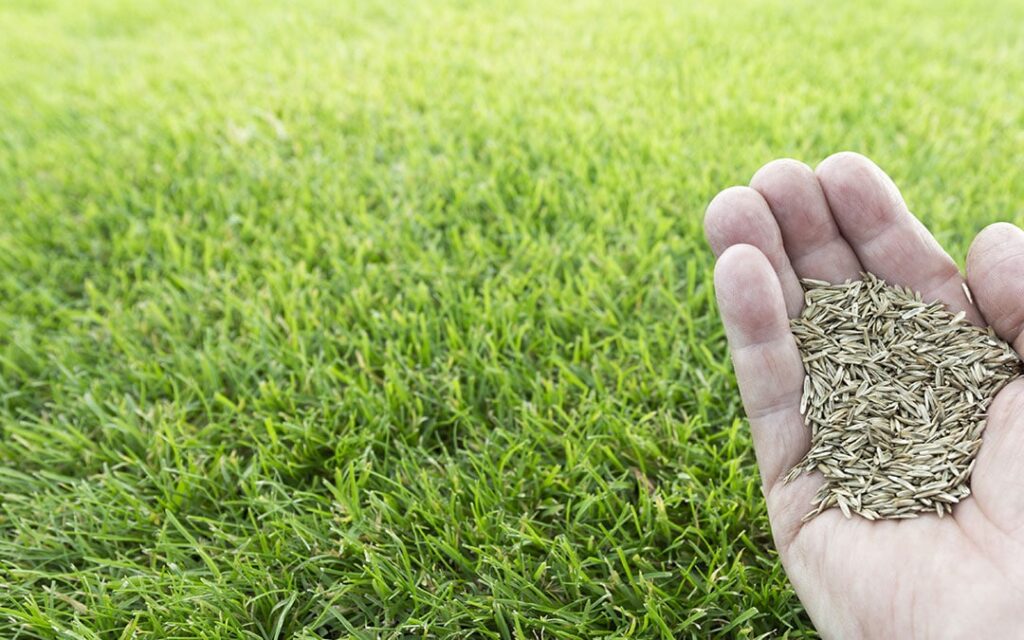
Overseeding
Perhaps one of the most overlooked yet important parts of lawn care maintenance is over seeding. Although your lawn may look healthy and is well fertilized, it is good to over seed it every three to four years. A turf lawn is no different than any other living organism it too grows weaker with age. In approximately five to six years your grass begins to slow down its rate of reproduction. Once this slowdown occurs the grass becomes thinner and vulnerable to weed growth within it. What’s more, when your grass begins to thin out you run a higher risk of having your turf become infected with diseases.
Over seeding your grass will make your turf thicker as it is in its healthiest state, prevent the growth of weeds, and protect your turf from being contaminated with diseases.
Hardscaping
Patio & Walkway Installation
A patio provides a dedicated space for outdoor activities, such as dining, entertaining guests, or simply relaxing. It extends your living area into the outdoors, making your home feel larger and more versatile.
A well-designed patio can significantly boost the visual appeal of your backyard. You can choose materials and styles that complement your home’s architecture and create a cohesive outdoor environment. Adding features like lighting, plants, or outdoor furniture can elevate the look even more. A beautiful, functional patio can increase your home’s value, making it more attractive to potential buyers. Outdoor spaces are often seen as a desirable feature and can set your home apart from others in the market.
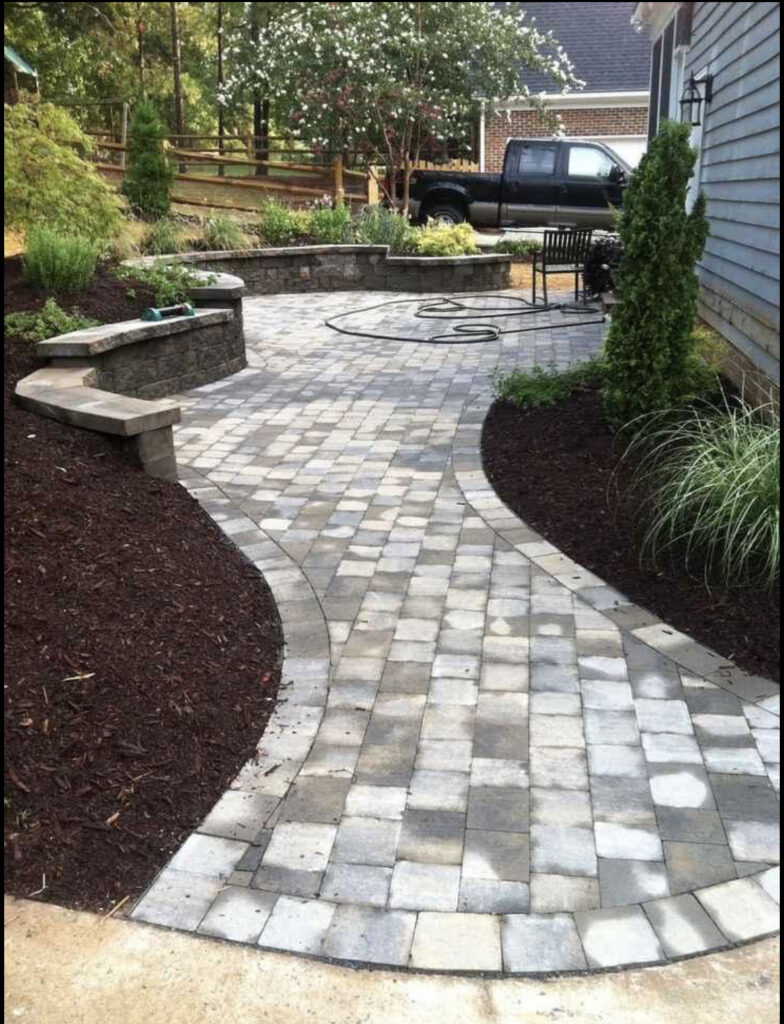
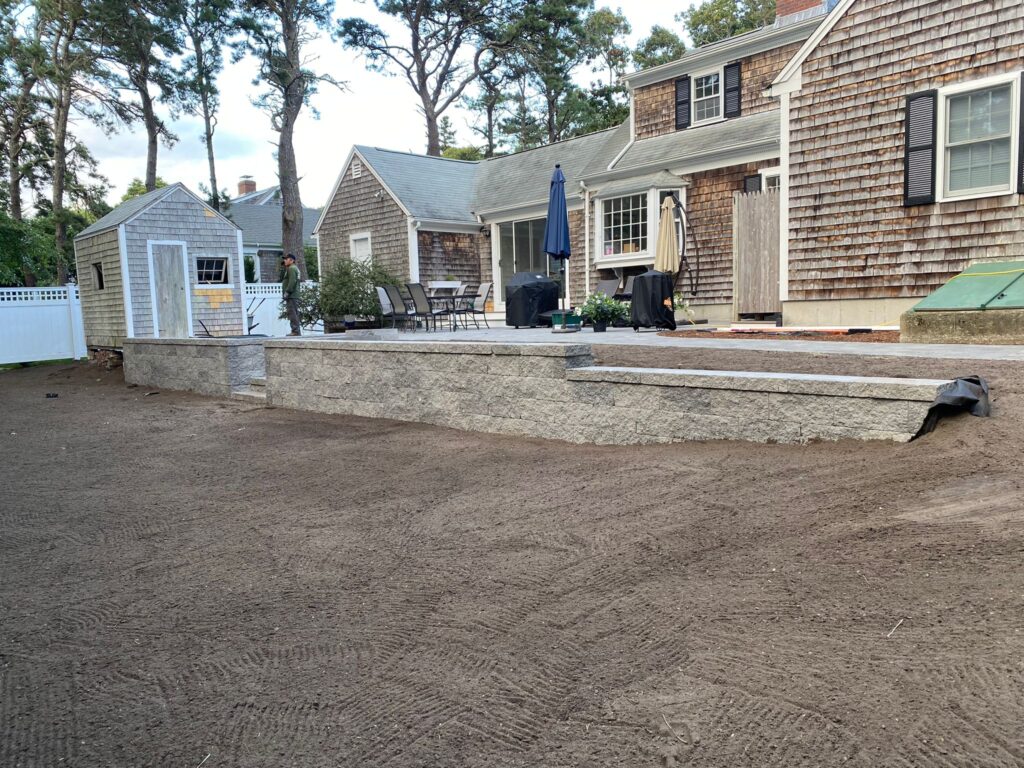
Retaining Walls
Installing a retaining wall can offer several key benefits for your property, especially if you have sloped or uneven terrain. Here are some of the main advantages: Erosion Control: One of the primary reasons for installing a retaining wall is to prevent soil erosion. In areas with slopes, heavy rainfall can wash away soil, damaging your landscape. A retaining wall holds the soil in place, preventing it from eroding and helping maintain the integrity of your yard. Leveling Sloped Ground: If you have a sloped yard, a retaining wall can help create a level surface, allowing you to make better use of your outdoor space. This can provide room for a garden, patio, lawn, or even a place for outdoor entertainment.
Cobble Stone Apron & Edging
Installing a cobblestone apron and edging around your driveway, pathways, or garden areas offers numerous benefits. Here’s some key advantages: Enhanced Aesthetic Appeal: Cobble Stone provides a timeless, classic look that enhances the beauty of your outdoor spaces. Whether you’re using it around a driveway, garden bed, or pathways, cobblestone edging and aprons create a sophisticated and elegant design. The natural textures and colors of cobblestones can complement various home styles and landscaping themes, from rustic to modern. Better Containment and Separation Cobblestone edging helps define and separate different areas in your yard. For example, it can create clear boundaries between your lawn, garden beds, driveway, or walkways. This containment function keeps gravel or mulch in place, reduces the spread of grass into garden beds, and prevents soil erosion in sloped areas.
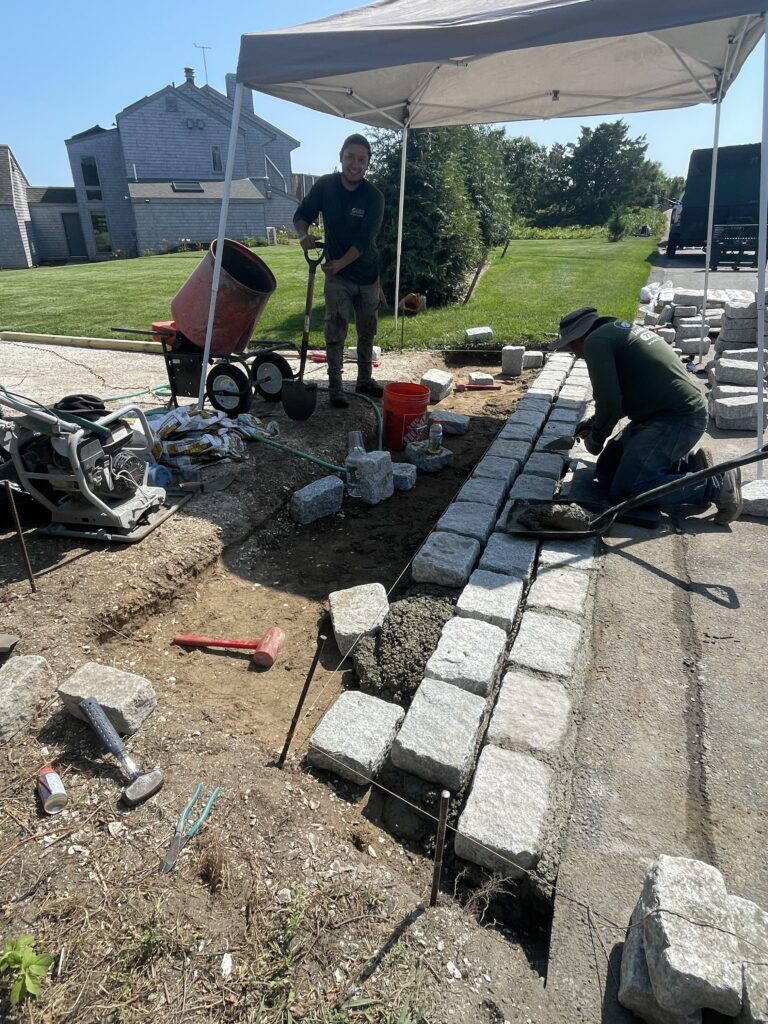
Irrigation
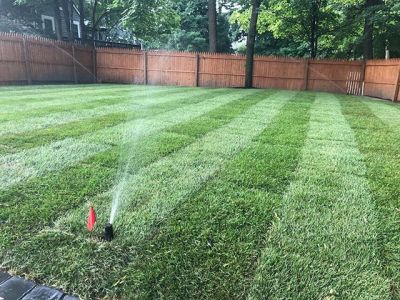
Desing and Installation
IIrrigation design and installation involve creating a system that provides water to plants, crops, or landscapes in a controlled and efficient manner. Proper design ensures that water is distributed evenly across the area and is used in the most efficient way possible, reducing waste and maximizing plant health. We offer a complete Design and installation: Drip Irrigation: Delivers water directly to the base of plants, reducing water waste and evaporation. sprinkler Irrigation: Distributes water in the form of droplets over a large area, suitable for lawns or fields.
Maintenance
Monitor the System: Check the irrigation system regularly to ensure it’s working efficiently. Look for any clogged emitters, leaks, or areas that are not receiving water properly. Seasonal Adjustments: Depending on the weather, you might need to adjust the amount of water the system is delivering. Many systems have programmable timers that can be set to different schedules. Clean Filters and Check Equipment: Clean filters regularly to prevent blockages and check the overall condition of pipes, sprinklers, and emitters.
